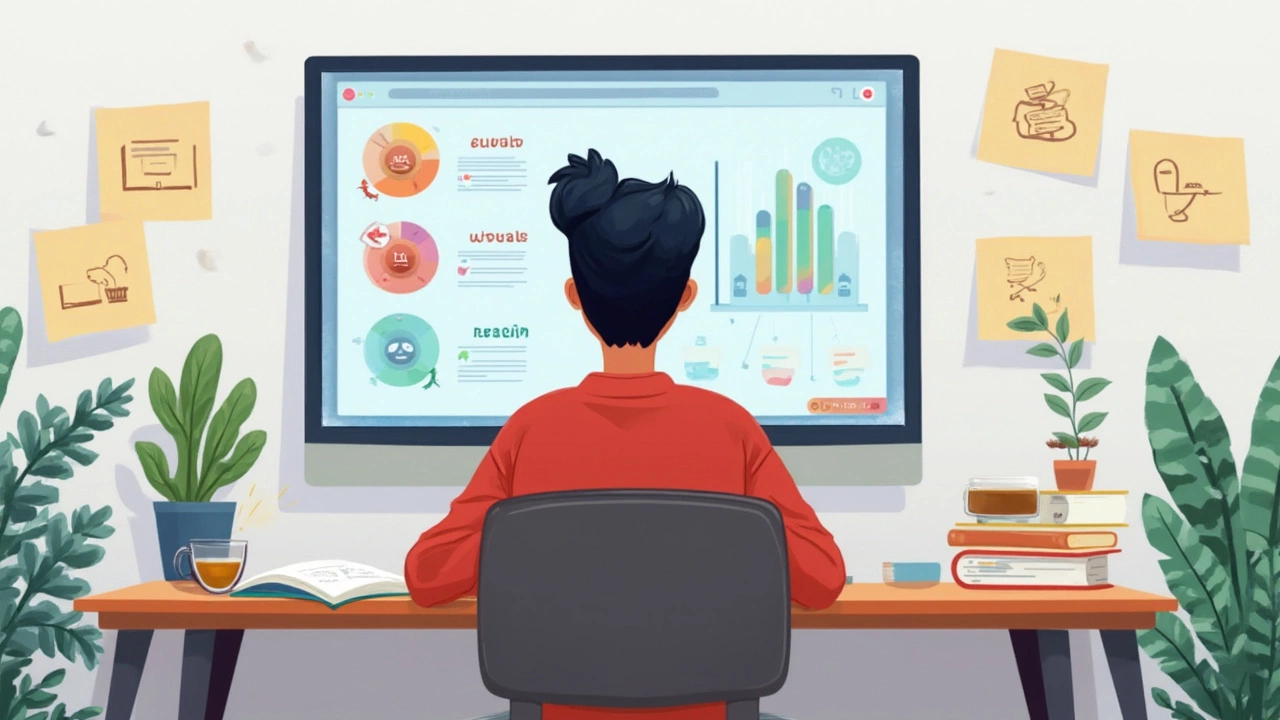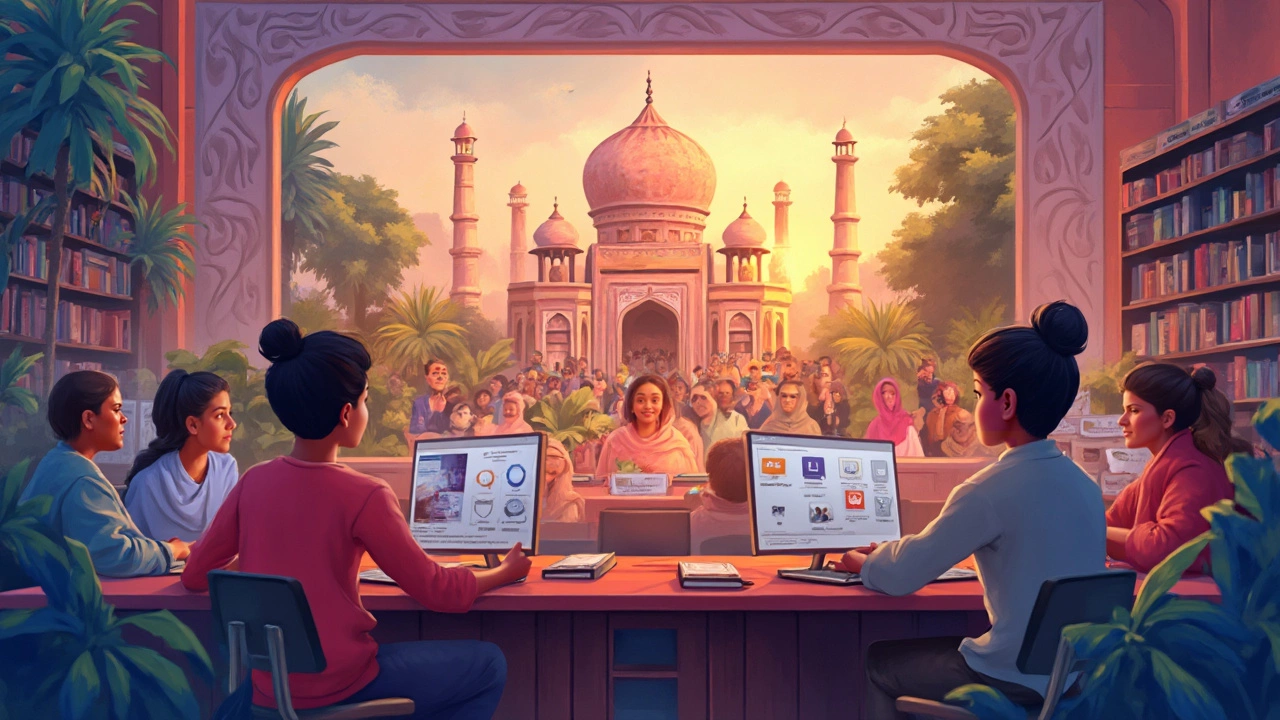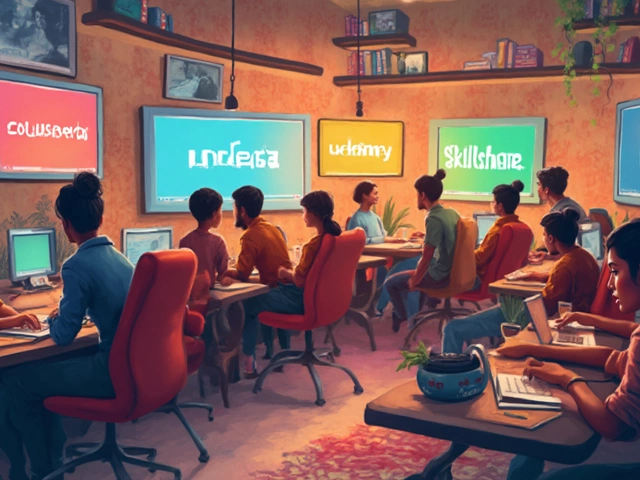Choosing an online learning platform feels like picking a cereal from one of those endless grocery aisles. There’s so much on the shelf, it gets confusing. But you don’t have to guess. Knowing the main platforms and what sets them apart helps narrow things down fast.
Let’s face it, everyone learns differently. Maybe you’re trying to land that next job, or you just want your kid to finally understand fractions (been there). Or you’ve got this creative itch to start drawing or designing, but don’t know where to begin. Some platforms are better for college-level courses, while others are a goldmine for quick skill-building or supporting school basics.
I’ll walk you through four key online platforms you’ll hear about everywhere in 2025. Each has its own vibe, content, and teaching approach. You’ll get clear details on what each one offers, who it’s best for, and a few tips to actually get value out of your time, not just collect digital certificates that go nowhere.
- Udemy: Learn Anything, Anytime
- Coursera: University-Grade Courses at Home
- Khan Academy: Free Education for All Ages
- Skillshare: Creative and Practical Skills
Udemy: Learn Anything, Anytime
Udemy is a household name in the world of e-learning and there’s a good reason why: you can basically find a course on anything here. As of 2025, Udemy has more than 210,000 courses. Topics range from Python coding and graphic design to dog training and baking sourdough—yep, no joke.
What’s cool about Udemy is the flexibility. Courses aren’t live, so you get to watch lessons at your own pace. A lot of instructors update their classes, so you’re less likely to get stuck with outdated info. Most courses offer lifetime access—if you buy today, you still have those lessons on hand years later.
Udemy isn’t free, but it has frequent sales. You’ll often see $100 courses slashed down to $15. If you’re worried about buying a dud, look at student ratings and real reviews—there are millions, so it’s unlikely to miss red flags. There’s also a 30-day money-back guarantee, so you can try a course without stressing about losing cash.
Here’s a quick look at why people turn to Udemy:
- Browse by skill level—beginner, intermediate, or advanced.
- Short video lessons (sometimes just 5 minutes each, perfect for busy schedules).
- Downloadable resources, quizzes, and hands-on projects for most courses.
- Apps for learning on the go, even offline—great if you get stuck in the doctor’s waiting room like I do with Quentin.
- Certificates of completion (handy, but not always “official” for job purposes).
Check out some Udemy numbers that show how massive it’s gotten:
| Stat | 2025 Figure |
|---|---|
| Courses Available | 210,000+ |
| Languages Supported | 75+ |
| Total Students | 62 million |
| Instructors | 70,000+ |
Tip: If you’re picking a course for work, always check if your company has Udemy Business access. You might get those courses for free, and there’s a whole separate library just for teams and professionals. Save your money for that extra-large coffee next time.
Coursera: University-Grade Courses at Home
If you want something as close to a college experience as you can get online, Coursera is where you go. Founded in 2012 and partnered with big-name schools like Stanford, Yale, and Google, this platform lets you take real university courses right in your living room—or on your phone, if that’s more your thing.
Coursera’s big draw? You get access to legit college and professional courses, often taught by the same professors who run things in-person. There are thousands of options—tech, business, health, data science, even personal development if that’s what you’re after.
Here’s a taste of what people like about Coursera:
- Most courses are free to audit (watch the whole course without paying).
- Paying gets you certificates and graded work, which can beef up your resume.
- Dozens of big universities and industry partners develop the material, so it’s always current.
- Flexible—it works on your time, whether you’re learning at 6 am before work or midnight after the kids are asleep.
Coursera also offers full degrees at a much lower price than attending on campus. Just in the past year, more than 100,000 people have enrolled in their degree programs worldwide.
If you’re wondering what’s most popular, here’s a quick snapshot from 2024:
| Top Subject | Most Enrolled Course | University/Partner |
|---|---|---|
| Data Science | Machine Learning | Stanford |
| Business | Google Project Management | |
| Health | The Science of Well-Being | Yale |
| Computer Programming | Python for Everybody | University of Michigan |
If you want to actually finish a course (yep, most people don’t), set small weekly goals and schedule reminders. I’ve learned it’s way easier to tackle big topics by breaking them down. Also, taking part in discussion boards helps a ton—there’s almost always someone struggling with the same thing as you.
If e-learning is your main focus, Coursera’s wide mix of content, top-notch instructors, and flexible pacing make it hard to beat if you want serious knowledge—not just surface-level stuff.

Khan Academy: Free Education for All Ages
Khan Academy is basically the MVP of free online education. It's been around since 2008, started by Sal Khan, and today it's used by more than 140 million people worldwide. The best part? Every single lesson—all the videos, practice problems, and quizzes—costs zero dollars. If you’re a parent, student, or even an adult getting back into learning, Khan Academy’s got you covered.
The platform stretches from kindergarten math and reading all the way up to college-level calculus, science, SAT prep, and even economics. It’s super easy to set up an account for yourself or your kid. Plus, teachers can track students’ progress with detailed dashboards.
What’s really cool is how lessons break down huge concepts into short, bite-sized videos. Each video is usually under 10 minutes, so you’re not stuck staring at your screen forever. Practice questions pop up right after so you actually get to try what you just learned.
- e-learning tip: Use the built-in daily learning goals to keep momentum (and avoid those giant study gaps).
- Check out the mastery system—it helps turn tricky skills from red to green, so you see what you’ve got down and what needs work.
- Schedule regular check-ins if you’re helping a kid (yep, it’s way easier to spot problems early).
Here’s a quick peek at what subjects you can find on Khan Academy and who’s using it:
| Subject | Grade Range | Languages Offered |
|---|---|---|
| Math | K-College | 13+ |
| Science (Bio, Chem, Physics) | Middle-College | 8 |
| Computing (Coding, CS) | Beginner-Advanced | English, Spanish |
| Arts & Humanities | All Ages | 5+ |
| SAT/Test Prep | High School | English |
Khan Academy is also the main partner for free, official SAT practice in the U.S., and thousands of schools relied on it when COVID shut everything down. It keeps growing—just last year, they rolled out new AI tools to give fast, step-by-step feedback on math work. If you want reliable learning materials with no charge, and you like tracking every quiz, skill, and jump in progress, it’s hard to beat Khan Academy.
Skillshare: Creative and Practical Skills
If you’re the sort of person who learns best by doing—especially with anything creative—Skillshare should be at the top of your list. It’s packed with videos on everything from photography and digital art to freelancing basics, productivity hacks, and even cooking. A lot of the classes are taught by working professionals, so you’re getting tips from folks who actually use these skills daily. That means you pick up real-life tricks, not just textbook ideas.
The platform works like a giant library. Once you grab a subscription, you get unlimited access to thousands of classes. There are bite-sized lessons (some are even under 20 minutes), which makes it easy to squeeze learning in between life’s usual chaos—like dog-walking or waiting for your kid’s soccer practice to wrap up.
Skillshare leans heavily into community. You can post your work, get feedback, and even join workshops run live by teachers. There’s a ton of hands-on projects, so you’re not just watching someone talk; you’re actually making stuff as you go. According to a 2024 Skillshare report, about 70% of users said they felt more confident using new skills at work after just a few courses.
Here’s a quick look at what people actually study the most on Skillshare:
| Popular Course Topics | Estimated Enrolled Students |
|---|---|
| Illustration & Digital Art | 1.2 million |
| Photography | 900,000 |
| Marketing & Freelancing | 650,000 |
| Productivity Tools | 540,000 |
If you’re just getting started, here are some tips to actually get value without bouncing around endlessly:
- Pick one class that fits a real need, not just something that 'looks cool.'
- Watch in short bursts—10-20 minutes—then try things out right away.
- Don’t be shy about sharing your projects or asking for feedback. The point isn’t perfection, it’s progress.
- Use their mobile app if you want to learn during commutes or breaks.
Out of all the e-learning platforms, Skillshare stands out for practical, immediately usable skills, especially if you want to turn a hobby into a side gig or level up on the job without formal pressure.













